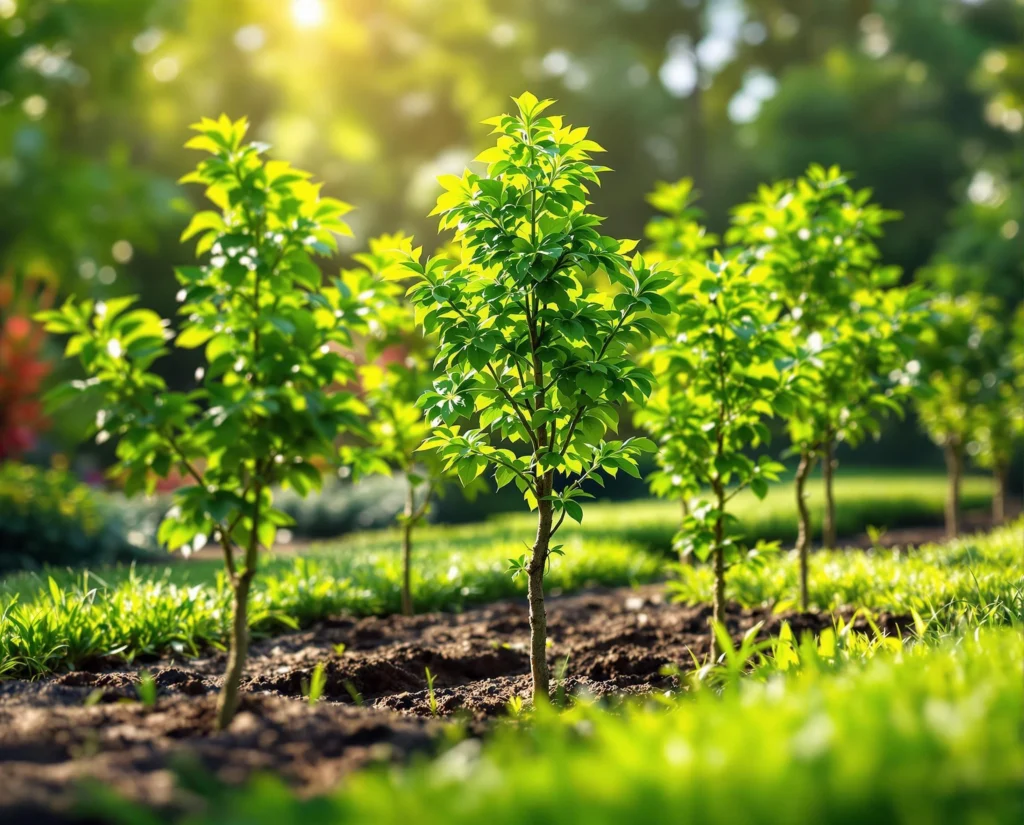Caring for Newly Planted Trees
As I step into the world of gardening and landscaping, one of the most rewarding experiences is witnessing the growth of newly planted trees. These magnificent beings are not only essential for our environment but also for our personal spaces, providing shade, beauty, and value. It's crucial to give them the right care to ensure their healthy establishment. In this guide, I’ll walk you through everything I need to know about caring for newly planted trees, so they flourish beautifully in my landscape.
The Importance of Proper Care
Understanding the importance of proper care for my newly planted trees sets the foundation for their success. Healthy trees can withstand diseases, pests, and environmental factors, making them resilient over time.
Watering My Newly Planted Trees
One of the most critical aspects of caring for my newly planted trees is ensuring they receive adequate water. Newly planted trees require regular watering to establish their roots.
- Water them deeply, allowing moisture to penetrate the soil.
- Water frequency depends on the tree type, soil, and climate.
Mulching Around the Base
Applying mulch around the base of my newly planted trees retains moisture and suppresses weed growth.
- I should use organic mulch, such as wood chips or bark.
- Maintain a 2-3 inch layer without piling mulch against the trunk.
Benefits of Mulching
Mulching not only improves moisture retention but also enriches the soil as it decomposes, supporting the health of my tree.
Choosing the Right Location
Picking the right spot for my tree contributes significantly to its successful growth. Factors such as sunlight, space, and soil type should guide my placement decision.
Sunlight Requirements
I need to consider how much sunlight my tree species needs. Most trees thrive in direct sunlight, so ensuring they’re not overshadowed by other plants or structures is essential.
Soil Quality
Soil quality also impacts root development. I should conduct a soil test to determine pH and nutrient levels, ensuring my tree's needs are met.
Pruning and Shaping
I must not forget that care for newly planted trees includes pruning. Good pruning practices encourage healthy shape and growth.
When To Prune
It’s best to wait until late winter or early spring to prune, focusing on removing any dead or diseased branches.
Correct Pruning Techniques
Using clean, sharp tools ensures that my cuts are clean and less prone to infection. I should aim to remove just enough to promote growth without overdoing it.
Fertilizing for Growth
Fertilization helps establish growth in my newly planted trees but should be approached carefully.
When to Fertilize
I should avoid fertilizing right at planting. Instead, I can apply a slow-release fertilizer in the growing season after the first year.
Choosing the Right Fertilizer
Acquiring a tree-specific fertilizer can provide essential nutrients tailored to my tree’s needs, fostering robust growth.
Environmental Factors
I'm aware that external factors such as extreme weather can impact my newly planted trees.
Protection from Harsh Conditions
Using protective guards can shield my tree from wind, frost, or extreme heat during its vulnerable stages.
Monitoring for Pests
Regularly examining my tree for signs of pests ensures I can take action quickly, preventing any infestations that could harm my tree.
DIY vs. Professional Services
While I can tackle many care tasks myself, there may come a time when hiring professionals could be beneficial. DIY can be risky, especially with advanced pruning techniques or pest issues. Seeking help ensures the safety and health of my newly planted trees.
Benefits of Hiring Experts
- Knowledge: Professional landscapers can offer tailored advice for my specific tree types.
- Efficiency: They can handle tasks more effectively, ensuring better results.
Testimonials
“I learned so much from the professionals! My trees are thriving thanks to their advice.” — Laura B., Cincinnati, OH
“They did an incredible job with my new saplings. I feel confident they'll grow beautifully.” — Robert T., Cincinnati, OH
“Hiring experts was the best decision I made for my garden!” — Sarah K., Cincinnati, OH
Did You Know?
Did you know that newly planted trees undergo a critical adjustment phase, called transplant shock, which can last up to two years? Providing the right care during this period greatly enhances their chances of survival.
TL;DR Summary
- Water regularly and deeply to establish roots.
- Apply a layer of mulch to retain moisture.
- Be mindful of sunlight and soil quality for optimal growth.
- Consider professional help for advanced care techniques.
- Monitor environmental factors and pests regularly.
FAQs
How often should I water my newly planted trees?
It's generally advisable to water deeply once a week, but I should adjust based on rainfall and soil moisture.
Should I add fertilizer at planting?
No, I should wait until the tree establishes itself, which typically takes about a year, before applying slow-release fertilizers.
What type of mulch is best for my trees?
I should use organic materials, such as wood chips or shredded bark, for optimal moisture retention and soil enrichment.
Can I prune my newly planted trees right away?
It's best to wait until the tree is established, usually after its first growing season, to avoid stressing it.
What signs indicate my tree is struggling?
Yellowing leaves, wilting, or stunted growth can signal issues, and I should closely monitor my tree and consult professionals if necessary.





